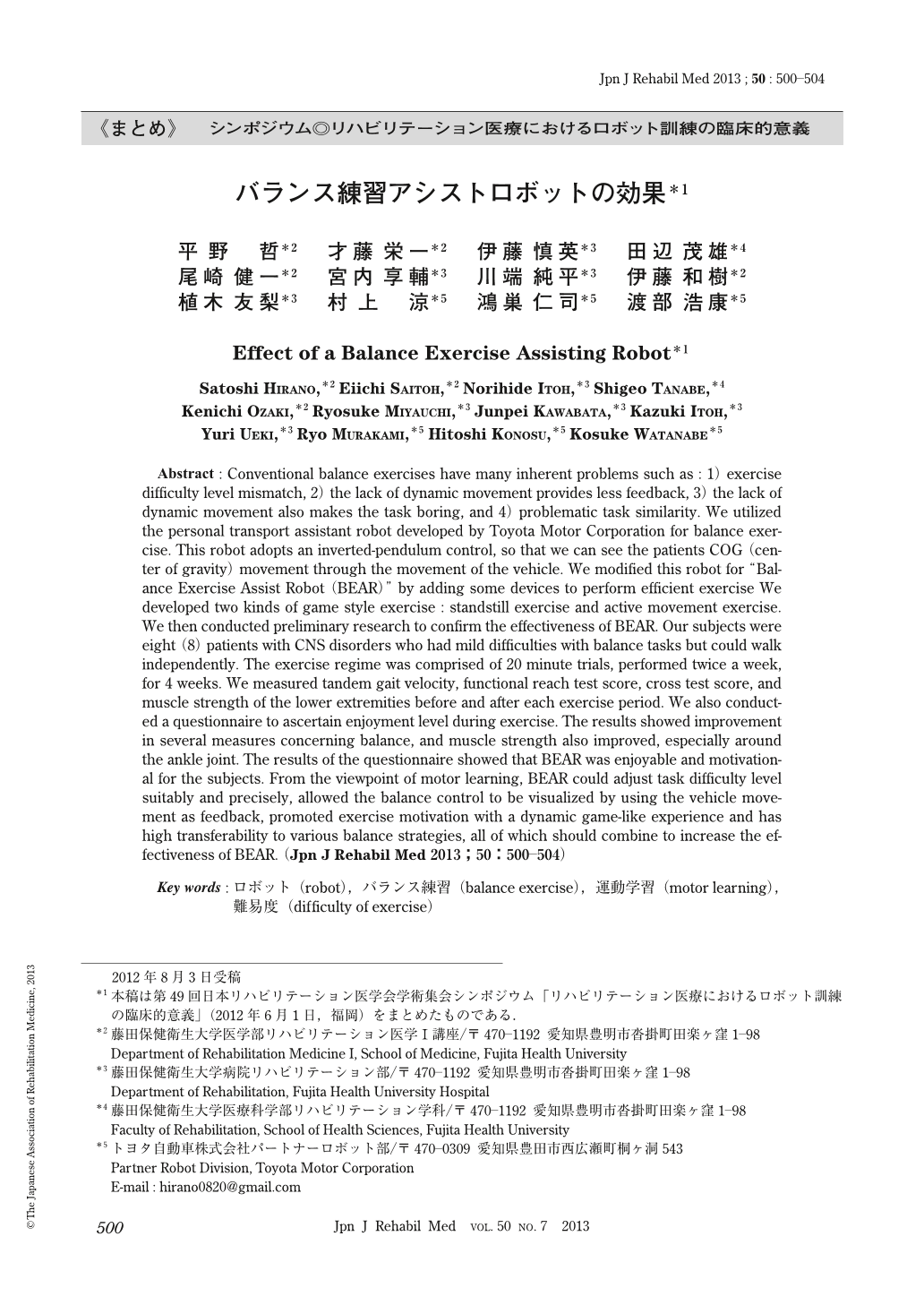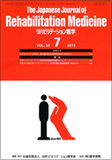Japanese
English
- 販売していません
- Abstract 文献概要
- 1ページ目 Look Inside
- 参考文献 Reference
はじめに
在宅高齢者における転倒の年間発生率は約10~20%とされており,転倒の5~10%に骨折が発生するといわれている1).要介護状態の原因として「転倒と骨折」は全体の9.3%を占める(2007年度国民生活基礎調査).在宅脳卒中患者の転倒は更に多く,年間発生率は40~60%とされており2~6),リハビリテーション(以下,リハ)医学において転倒予防の意義は大きい.
Abstract : Conventional balance exercises have many inherent problems such as : 1) exercise difficulty level mismatch, 2) the lack of dynamic movement provides less feedback, 3) the lack of dynamic movement also makes the task boring, and 4) problematic task similarity. We utilized the personal transport assistant robot developed by Toyota Motor Corporation for balance exercise. This robot adopts an inverted-pendulum control, so that we can see the patients COG (center of gravity) movement through the movement of the vehicle. We modified this robot for “Balance Exercise Assist Robot (BEAR)” by adding some devices to perform efficient exercise We developed two kinds of game style exercise : standstill exercise and active movement exercise. We then conducted preliminary research to confirm the effectiveness of BEAR. Our subjects were eight (8) patients with CNS disorders who had mild difficulties with balance tasks but could walk independently. The exercise regime was comprised of 20 minute trials, performed twice a week, for 4 weeks. We measured tandem gait velocity, functional reach test score, cross test score, and muscle strength of the lower extremities before and after each exercise period. We also conducted a questionnaire to ascertain enjoyment level during exercise. The results showed improvement in several measures concerning balance, and muscle strength also improved, especially around the ankle joint. The results of the questionnaire showed that BEAR was enjoyable and motivational for the subjects. From the viewpoint of motor learning, BEAR could adjust task difficulty level suitably and precisely, allowed the balance control to be visualized by using the vehicle movement as feedback, promoted exercise motivation with a dynamic game-like experience and has high transferability to various balance strategies, all of which should combine to increase the effectiveness of BEAR.

Copyright © 2013, The Japanese Association of Rehabilitation Medicine. All rights reserved.


